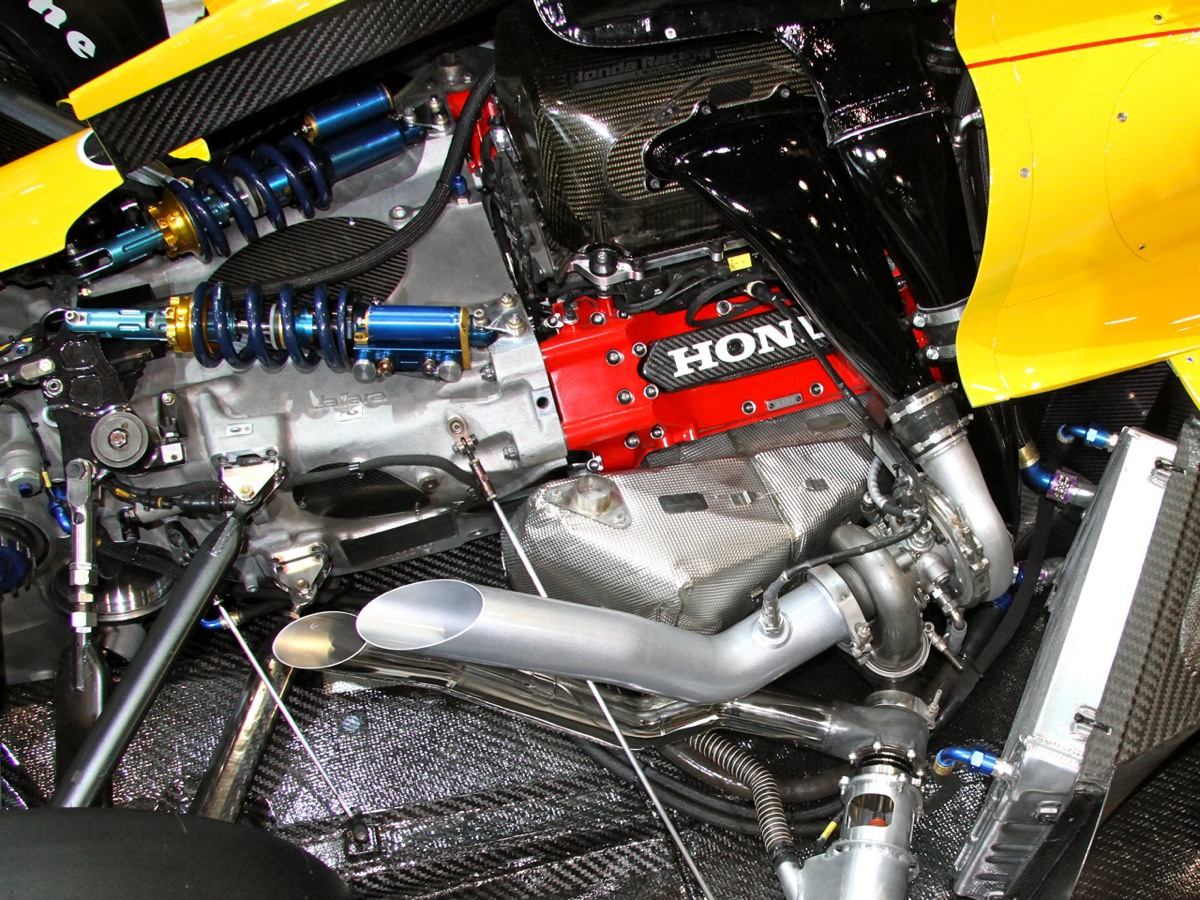How Honda’s 2.2L Engine Makes Over 700 Horsepower
 |
| Honda IndyCar engine mounted in car |
Honda's engine it currently runs in the IndyCar series is a 700-horsepower 2.2-liter turbocharged V-6. Keep an eye on the displacement figure. Now, realize the Honda Civic Type R features a 2.0-liter turbo-4 engine with 306 hp. Where in the world is Honda getting nearly 400 more hp from the IndyCar engine with such a similar displacement?
Have no fear because Jason Fenske of Engineering Explained is here. Jason took a look at Honda's IndyCar engine and compared it to a street engine, the 2.0 turbo-4 from the Civic Type R, to get a sense of how the company builds this racing engine. On our journey to figuring out how this is possible, we have to make a few assumptions. For competitive reasons, we don't know exactly how much power the Honda IndyCar engine makes, but the conservative estimate is 700 hp. Jason also assumes the max engine bore allowed for IndyCar and where peak hp occurs. In this case, that's 12,000 rpm.
Knowing this, Jason calculates the stroke, which leads us to piston speed. Off the bat, the engine is running much quicker with a piston speed of about 46.3 mph. The Civic Type R's engine has an estimated piston speed of 44.8 mph. That's not terribly far off, so Jason digs deeper.
The explainer-in-chief then calculates figures to correct for engine displacement, boost, and rpm. Through this, he notes IndyCar only caps power based on boost for different tracks. With corrected figures, we see the IndyCar engine is making somewhere around 169 hp per liter. The Civic Type R, in comparison, makes 153 hp per liter.
What does it all boil down to in the end? Fuel. IndyCars run E85, which is only 15 percent gasoline. While E85 burns quickly, its benefits for performance are well documented. Its traditional octane level is well over 100 and it lets Honda run advanced ignition timing and a higher compression ratio compared to a street engine.
